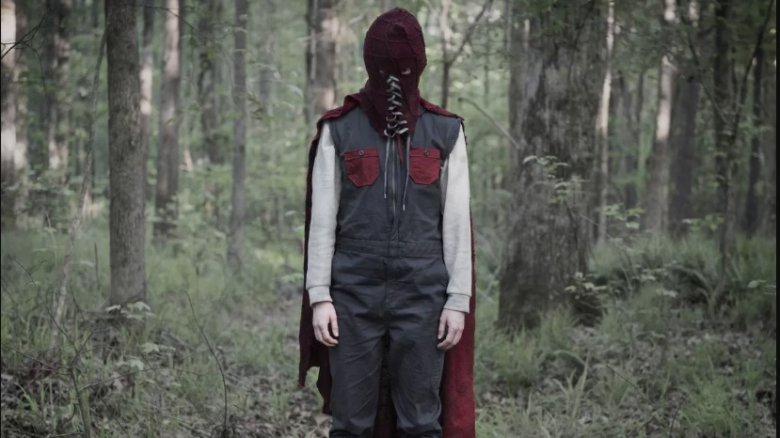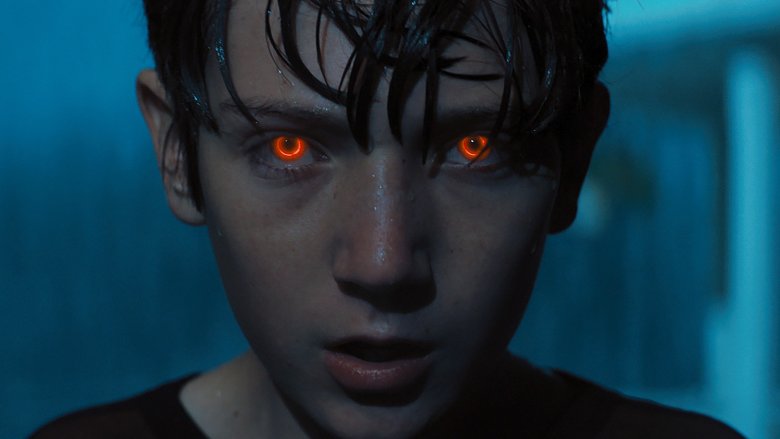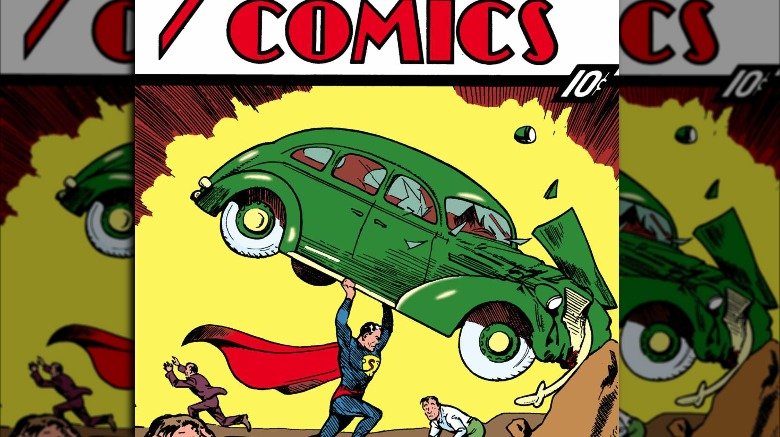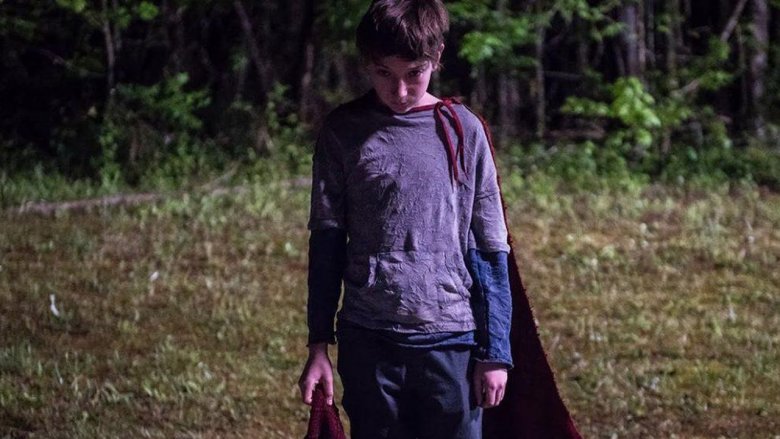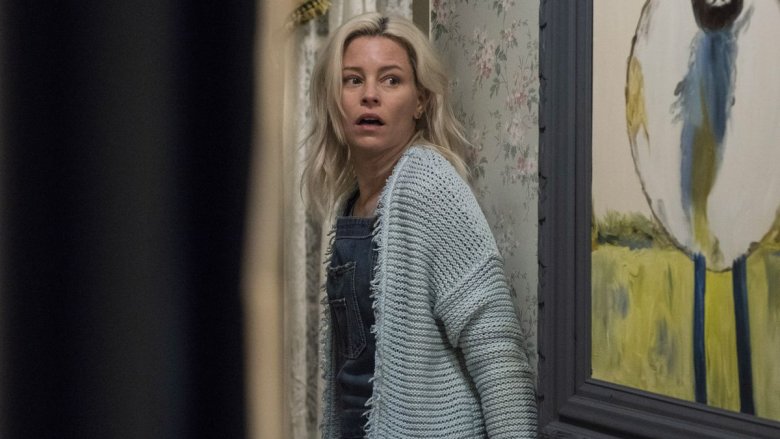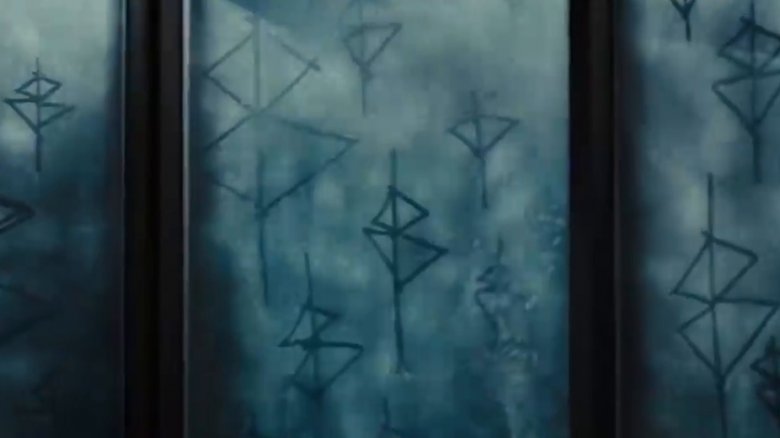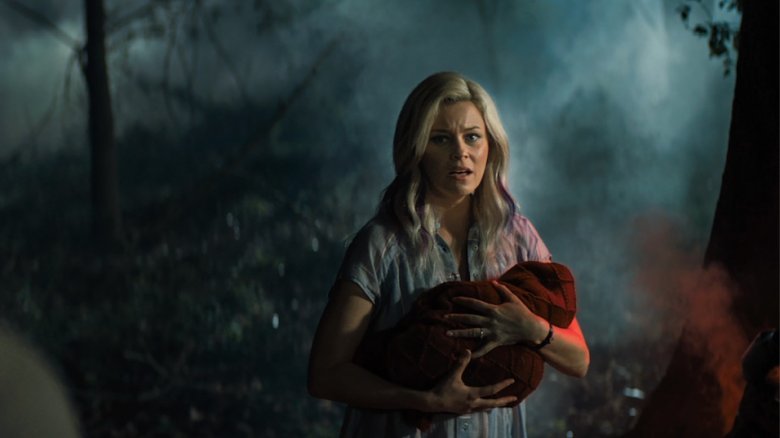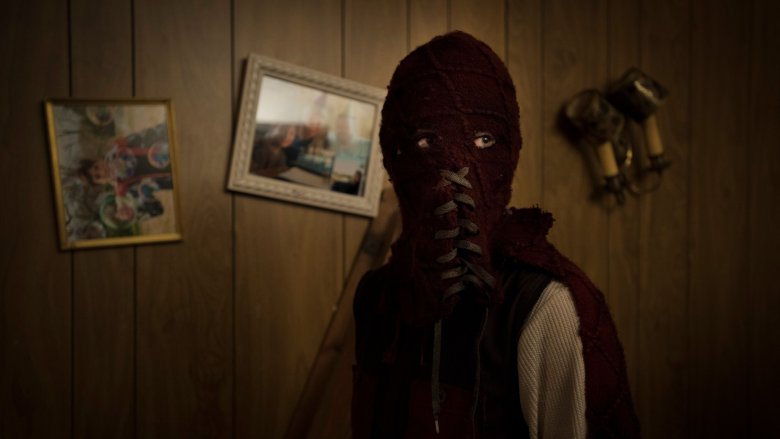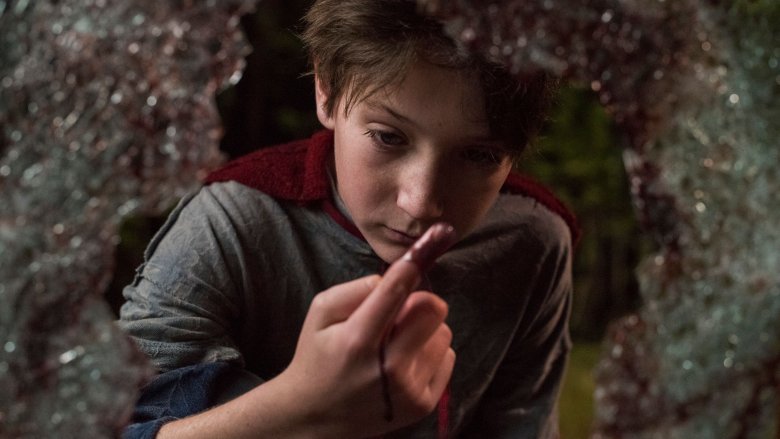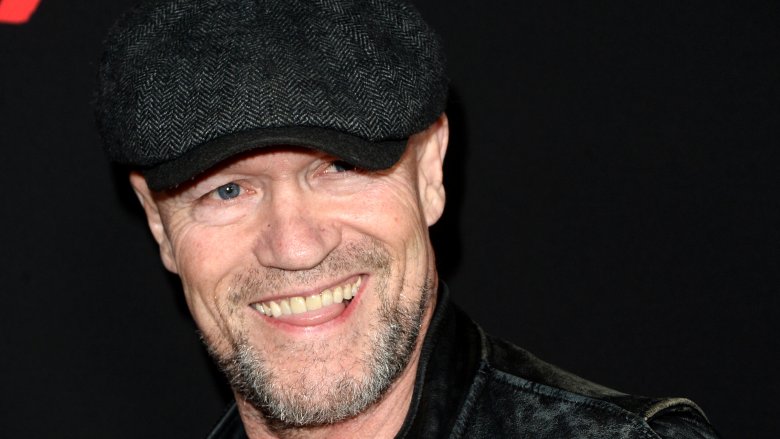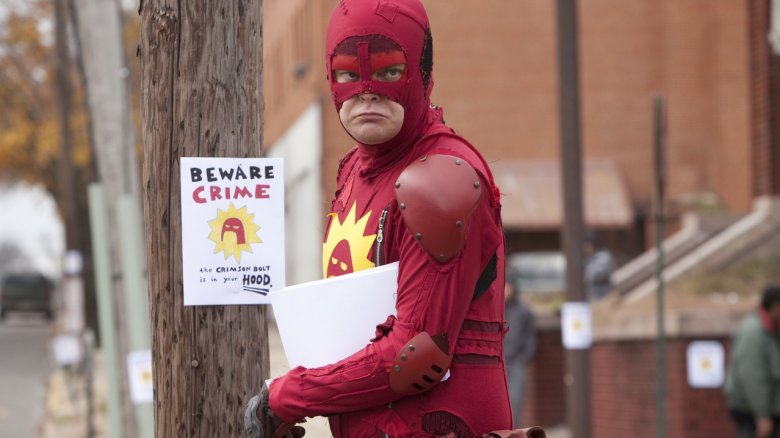Small Details You Missed In Brightburn
The marketing for Brightburn has largely revolved around two attributes: the involvement of James Gunn (who is actually not the director of the film, but rather serves as producer, while his cousins Mark and Brian wrote the script for David Yarovesky to direct) and the underlying high concept of the film. As the now meme-famous Letterboxd description puts it, Brightburn answers the question "What if Superman was an evil little boy?"
"Non-copyright-infringing Superman goes evil" stories are a dime a dozen in comics, but they usually wait until he's actually grown up and acting as Superman. Brightburn, however, focuses on a young version of not-quite-Superman as he goes about his murderous business. With nearly 100 years of Superman stories and decades of stories starring Superman archetypes, there's plenty of room for Brightburn to pay homage to other works. In that respect, at least, it didn't disappoint. From the requisite Superman references to nods to other Gunn properties, here are some small details from Brightburn that you might have missed. Spoilers ahead.
Fire in his eyes
Heat vision is about as central to Superman's aesthetic as invulnerability, super strength, and flight, if not even more so. It's basically a requirement for any Superman pastiche to blast someone or something with heat vision at some point. Brightburn, as you might expect from the title, most definitely features young Brandon Breyer (Jackson A. Dunn) shooting bright and burning heat vision out of his eyes to kill people.
One such kill seems to directly match the visuals used in the most recent Superman films like Justice League and Superman v Batman: Dawn of Justice — of course, those films didn't involve Clark Kent blasting his adopted father's brains out with eye lasers. Brandon also appears throughout the film hovering in the darkness with red eyes, presumably as a way to prep his heat vision for murder. Although the actual Superman doesn't tend to heat vision his villains away, the past couple decades of comics have featured the Man of Steel appearing menacingly with red eyes — a habit that's leaked out into the various Superman pastiche comics like Irredeemable and The Mighty.
Full of action straight from the comics
If there's a single visual most associated with Superman, it would almost undoubtedly be the cover to Action Comics #1: the first appearance of the Man of Steel. It's an indelible part of Superman's origin story and a powerfully striking visual all on its own. Before the superhero genre was crystallized as a concept, here was a man in a garish red and blue suit lifting a car over his head as terrified onlookers fled away from him. Superman, of course, would generally receive a much less terrified reaction from onlookers in the next nigh-century of his adventures.
Still, it's somewhat understandable that so many writers over the years have imagined a world in which that initial response of pure fear directed at a being capable of such destruction was the norm instead of a cool cover. Brightburn pays homage to the visual in a surprisingly subtle way. After his uncle Noah (Matt Jones) finds out about his violent tendencies, Brandon begins tormenting his family member as Noah drives away in his truck. After showing up again in his creepy mask after the truck breaks down, his uncle starts screaming as Brandon lifts the car up into the air off-camera. The filmmakers don't make it overly explicit, but it's undeniably a reference to Action Comics #1 — although in the source material, Superman didn't then smash the steering wheel into the driver's face until he was a bloody mess.
Brightburn the stalker
Throughout Brightburn, Brandon exhibits some pretty troubling ideas about women and sexuality. He keeps a stack of photos under his bed of headless lingerie models and anatomically correct diagrams and pictures of internal organs. If that weren't bad enough, he also starts stalking a girl, Caitlyn, from his class once he realizes that he has superpowers. When Caitlyn understandably doesn't want to be near him at school, he crushes her hand before showing back up at her home again to tell her that he's going to "take care" of her mother for trying to keep them apart.
It's not exactly a juicy role, and Caitlyn's a pretty far cry from the fearlessly honest Lois Lane of Superman media. Still, the two have one thing in common, at least — besides gaining the affection of an alien from space. Lois Lane and Caitlyn both seem to like writing about similar subjects. When Brandon shows back up at Caitlyn's house, she's typing out an essay with her good hand. If you're quick enough to see the title before the camera shifts, you can see that it's an essay that has something to do with justice. That's the last appearance of Caitlyn in the film, but presumably the creators wanted to at least have the possibility of a Lois Lane archetype in the works in case of a possible sequel.
Look! Up in the sky! It's a bird! It's a plane! It's a crashed plane!
There's one more major iconic moment from Superman history that Brightburn subverts: Superman saving a plane. It's an endlessly repeated moment for the Man of Steel that appears again and again in nearly every visual adaptation he's had to date. There's good reason for that; it shows exactly the scale of problems that Superman is willing and able to handle. He can assist with a burning building, but there's firefighters for that. He can stop a criminal, but so can most other vigilantes. A crashing plane hurtling towards the ground, however? That's a job for Superman.
Brightburn prefers to turn this well-thought symbolism on its head in a cruel way. The end of the film sees Brandon drop his adopted mother to the ground from a high altitude. Freed from the last remnants of his humanity, he turns to see an airplane hurtling through the air towards him. The scene cuts to a demolished airplane that's destroyed the rest of the Breyer household, leaving Brandon the only obvious survivor. While Superman's act of saving a plane showcases that even in the most terrifying situation imaginable, a hero might arrive, Brightburn leaves us with nothing but wreckage and a destroyed family.
The Brightburn emblem bears a resemblance to a bevy of other symbols
But enough about Brightburn's relationship to Superman; like a cultural magpie, the film pulled inspiration from plenty of other famous pop culture works. For starters, the symbol that Brandon draws throughout the film looks a lot like symbols used in other works. Most clearly, it resembles a symbol used in both Berserk and Nameless. The former is a famous manga by author Kentaro Miura that's known for gruesome violence, otherworldly evil, and a demonic presence summoned by a symbol called the Brand of Sacrifice. It's a close match for the symbol that Brandon draws in his notebook and at the scenes of his crimes.
The symbol also makes an appearance in Chris Burnham and Grant Morrison's comic book Nameless, where it represents the insanity of an other-dimensional god. In fact, the symbol in Nameless is nearly a doppelgänger for Brandon's symbol. Regardless of where the filmmakers drew their inspiration, it's clearly meant to signify otherworldly evil and meaningless violence.
The spread of red
Even if you caught all the above references, you still might have missed some of the small details relating directly to the film. For starters, did you notice Brandon's wardrobe changing? Early on, his spaceship pulses with red light which seems to activate his more homicidal urges. After that moment, his wardrobe gains more splashes of red the more evil he becomes.
What starts with a red hood on a grey sweatshirt eventually leads to an almost entirely red soccer shirt. He quite literally goes from wearing shades of grey as someone who can still be redeemed to matching the blood he spills in the color he wears. It's arguably most obvious in the scene when he attacks Erica (Becky Wahlstrom) in the diner. He sends a shard of glass into one of her eyes, and when she pulls it out, she can only see through a red tint. Brandon stays on the red side of her vision for nearly the entire scene, showcasing his thirst for blood.
Brandon is establishing a colony
Early in the film, Brandon is in class learning about wasps and bees. As with any scene in any movie involving a classroom, the lecture of the day has a lot of resonance with the rest of the plot of the movie. Brandon is asked about the difference between wasp hives and bee hives, and responds that bees colonize, whereas one species of wasp is predatory, attacking and killing until a hive is created. Obviously, Brandon is an alien version of one of these insects — his mask features shoelaces pulled through to look like an insectoid proboscis, and the film spends a solid chunk of time focusing on bugs crawling around.
The question is which is he? The breeder or the predator? While it seems at first glance that he's more like the wasp, killing and destroying in order to make the earth his home, the film intertwines his nascent violence with puberty. He has urges towards women, the details of which the audience is mercilessly spared from, but we know that it involves clear knowledge of their anatomy. Like yet another Superman pastiche, Invincible, Brandon might be planning to create more little Brightburn monsters to take over the earth with him.
Dissected frog and dissected Erika
While we're on the subject of Brandon's more disgusting urges, Erica's suffering doesn't end with the attack in the diner. As the audience, and Brandon's mother Tori (Elizabeth Banks), find out later in the film, the police can't find Erica's body for a reason. Brandon takes her back to the barn in order to perform a grotesque dissection, presumably to figure out what makes people work.
Her organs have been removed, and she's been nailed to the wall like a pinned butterfly or dissection specimen. It's actually a moment in the film that's set up fairly early on in a subtle way. On Brandon's dresser, he has an anatomical frog statue that's been partially opened up. Its presence in his room, alongside more mundane toys and clothes, implies that the alien sociopath has been thinking about what's inside people and animals for a lot longer than the movie explicitly suggests.
Michael Rooker's YouTube channel
Even though James Gunn didn't direct Brightburn, his influence as a producer is clearly felt. Even beyond the use of violence and horror movie trappings, a familiar face makes an appearance in the film. If you stay until the end, you can see Chronicle-esque cell phone footage of Brandon destroying cities and causing all manner of terror.
As he becomes an urban legend as the credits roll, veteran character actor and frequent James Gunn collaborator Michael Rooker appears as the Big T. The character seems like an Alex Jones-type personality as he screams about how the "fake news" is keeping "Brightburn" a secret from the general populace. Even though it's just a small cameo for the Guardians of the Galaxy star, Gunn and Rooker have collaborated on scores of projects together, from Slither to Super. At this point, we wouldn't be surprised if the two are contractually obligated to work together on their films.
Brightburn exists in a Super universe
Rooker's cameo isn't the only connective tissue that Brightburn has to other James Gunn movies. During the Big T's video sermon, he brings up other monsters and urban legends that might be "working with" Brightburn to destroy America, including an aquatic creature, a woman who binds men with ropes, and others. Among the other creatures, one of the pictures show Rainn Wilson's Crimson Avenger superhero identity from Gunn's earlier film, Super. In addition, the diner that Brandon attacks midway through Brightburn is called Darbo's. In Super, the Crimson Avenger's real name is Frank Darbo, and he works as a short-order cook.
Brightburn could function as a pseudo-sequel to Super then, with Frank having gotten his life together enough to have franchised a restaurant with his name on it. Whether that means we're in for some sort of "secret sequel" along the lines of M. Night Shyamalan's Glass, only time, and Brightburn's box office, will tell.
